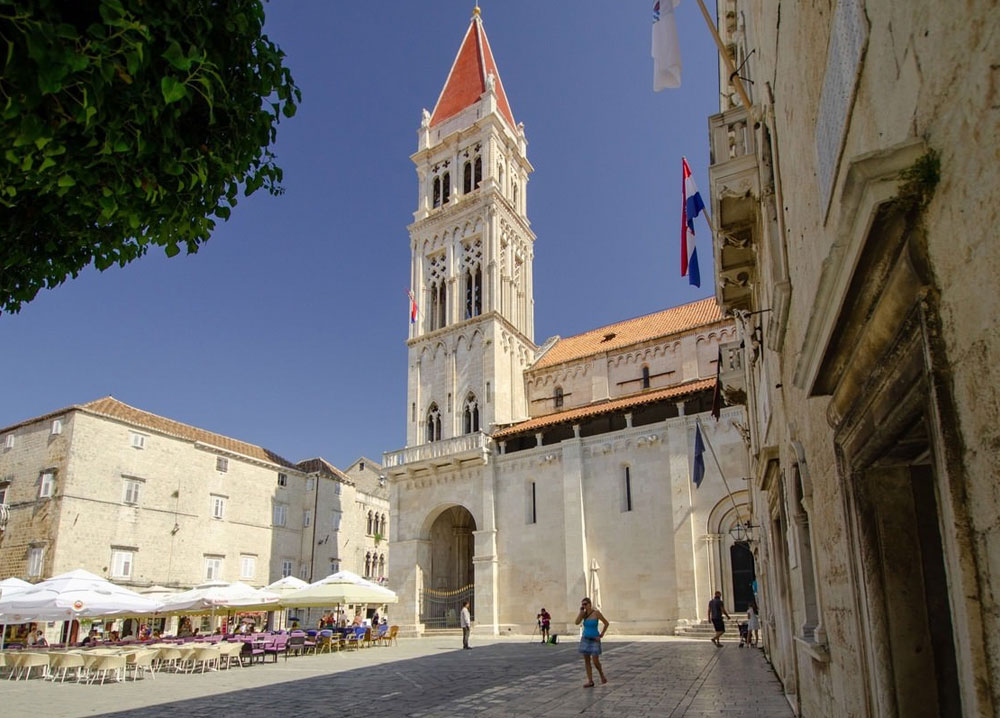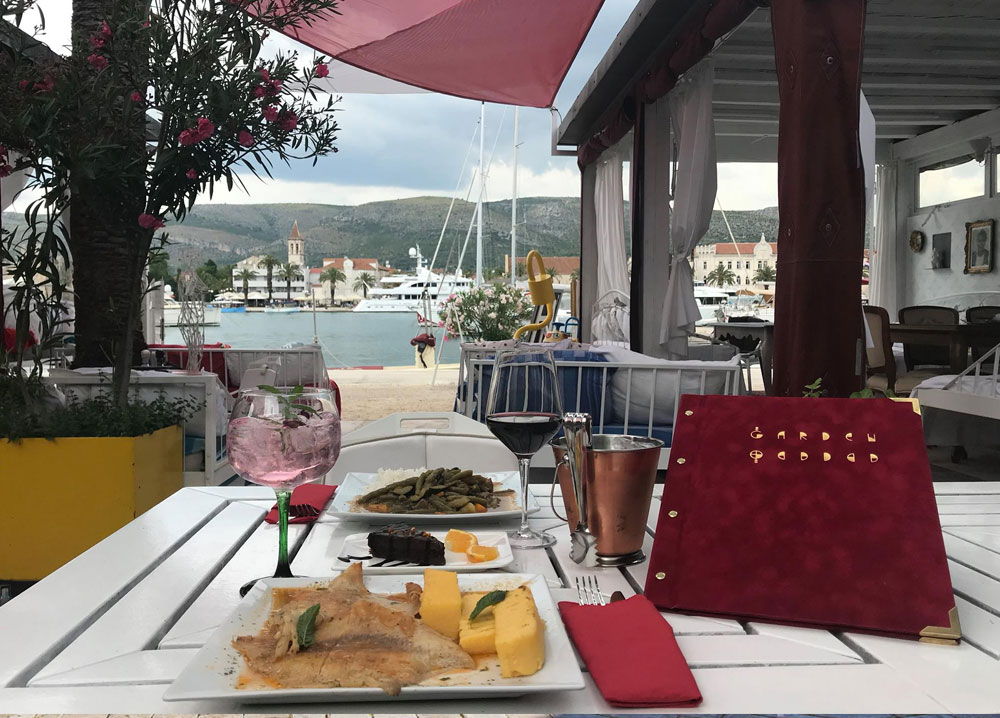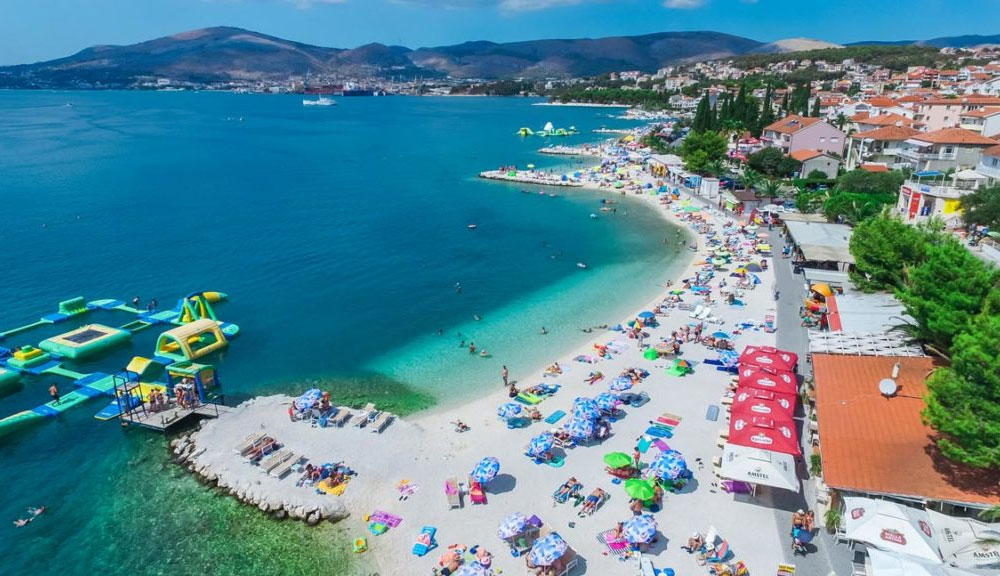The Best of Trogir in a Day

Secluded on a tiny island protected by medieval walls, Trogir is a lovely little town for aimless wandering and leisurely exploring. It checks all of the boxes for my perfect small town criteria: walkable, scenic, easygoing vibe, great local food, and ideal for people-watching. And Trogir is only thirty minutes west of Split by car, so you could combine a quick visit with the rest of your Croatian holiday.
Trogir is a very interesting and a very photogenic town. You’d want to spend at least a whole day here exploring all the hidden away laneways, iconic corners, water views, seaside paths and castles, appreciating the weight of the history here.
Trogir was settled by the Greeks in 4-3 century BC. In the first century AC, Trogir became Roman municipality, joined to Salona, centre of Roman province of Dalmatia. Upon the fall of the Western Roman Empire in the 5th century, Trogir had been developed as an independent town. In the 6th century, the Croats settled in the Trogir area.
In the 9th century, Trogir, became part of a Byzantine province whose capital was Zadar and at the end of the 10th century, Venice made its first, though not its last incursion.
In 1107, the first Croato-Hungarian king, Kolomon, confirmed Trogir’s municipal rights and Trogir swore allegiance to Hungary. Alas, the era of peace came to an abrupt end when the Saracens destroyed the town in 1123.
Rebuilding commenced and by the 13th century Trogir’s booming economy sparked an architectural renaissance.
To help you explore Trogir easy, efficiently and inspirationally, we’ve put together a few must-see’s and do’s here.

Get lost in Trogir
Built in the 14th century, the town Loggia is located on the main town square. It was first mentioned in 1311, and got its final shape in the 15th century, during the Renaissance period.
The main town square was initially a multi-use facility – a courtroom, shelter and a meeting place. The columns supporting the roof are of different origin and stylistic features. Above the court tables are Renaissance reliefs, emblems, statues and Latin inscriptions. What is particularly interesting is the relief of St. John, the bishop of Trogir, holding the city in his hand, as well as the relief of St. Lawrence and the allegory of Justice with scales, which is the work of Nikola Firentinac.
From here, you are on the path to getting lost in the beautiful city of Trogir. This is a good type of getting lost as it will take you on a journey of discovery and joy.
Next on our path is the Cathedral of St. Lawrence, a Roman Catholic triple-naved basilica constructed in Romanesque-Gothic in Trogir.

The cathedral, called St. John among locals, is the most distinctive building, dominating the area – you won’t miss it. Built on foundations of the old basilica which was destroyed after Saracens attack in 1123, construction of this splendid structure started in 1193 and has been building for four centuries until finally completed around 1500. This over two thousand years old building is like a time machine – take your time here.
Perhaps one of the most notable features of the Cathedral is its amazing Romanesque door, carved in 1240 by Master Radovan. It is a monumental and unique piece of art of Dalmatian Middle-age, one of the most important monuments of Croatian history. Inside, don’t miss the richly decorated 15th-century Chapel of Blessed Ivan Orsini, Trogir’s first bishop, halfway along the left-hand wall. Be sure to take a look at the treasury, which contains an ivory triptych and various silver reliquaries. You can also climb the 47m-high cathedral bell tower for views over the old town.

During the 15th century, Cipiko Palace was home to Trogir’s most prominent family. Today its architecture and furnishings are what draw visitors, who also marvel at an intricately carved Venetian-Gothic triple window.
Unfortunately it isn’t open to the public but it’s worth swinging by for a look and photo opportunity appreciating the grandiosity of the past.
Wow… this is definitely best Lounge Bar in Trogir, say many of this venue’s reviews. Whenever you feel like you need a break from all the walking, looking around and photo taking, rest your feet at the Lounge Bar Garden at Put Cumbrijana 10, 21220, Trogir.

When you are on your feet, exploring a city full of interesting gems, no matter how small the city is, you will eventually need a pit stop for some rest, food and drink. Lounge Bar Garden is one of the highly regarded spots in Trogir. The bistro Garden is a unique spot nestled on the seaside, only 3 minute walk from the center of Trogir, a few meters from the sea. The Garden is settled in a 400 years old palace with beautiful views. It’s a great vibe here.

Once you replenish your energy and ready to roam, explore beaches around Trogir. The Dalmatian Coast is famous for its calm and blue water, which is perfect for swimming and its pebble beaches. From Medena Beach to Ciovo Island, Okrug Gornji and Kava, there are many swimming options or just a relaxing moment to pause on the beach. Any of these are perfect for a good photo stop!

Kamerlango Castle
Kamerlengo Castle in Trogir Built by the Venetians in around 1420, this fortress was once connected to the city walls. Inside it’s basically an empty shell, but you can climb up and circle the walls.
Kamerlengo began to deteriorate at the end of the 19th century and was renovated after World War II. Today the castle’s interior courtyard is used as a summer stage and open-air cinema and concerts during the Trogir Summer festival. You can also climb to the top of the tower and enjoy the view during the day and also at night when no movie is showing.
If you want help picking your best Croatian experience, just give our team a call on 1800 242 353.
